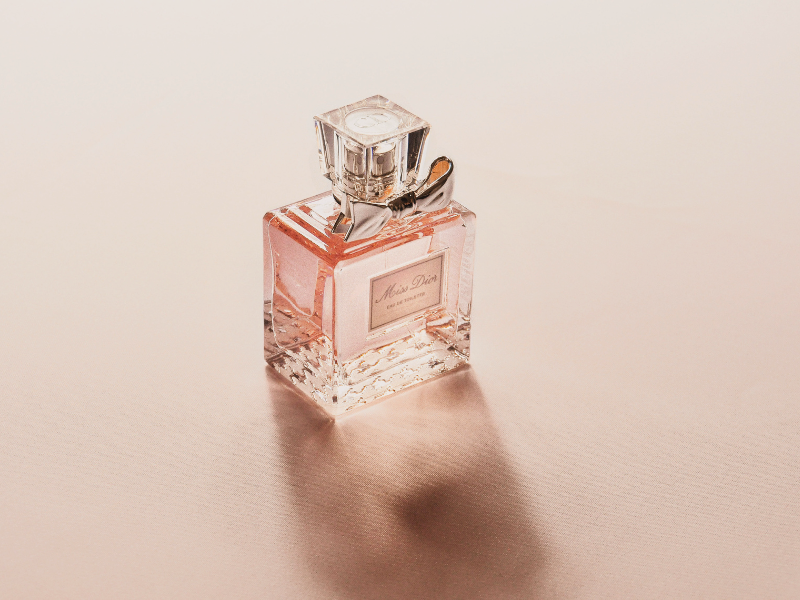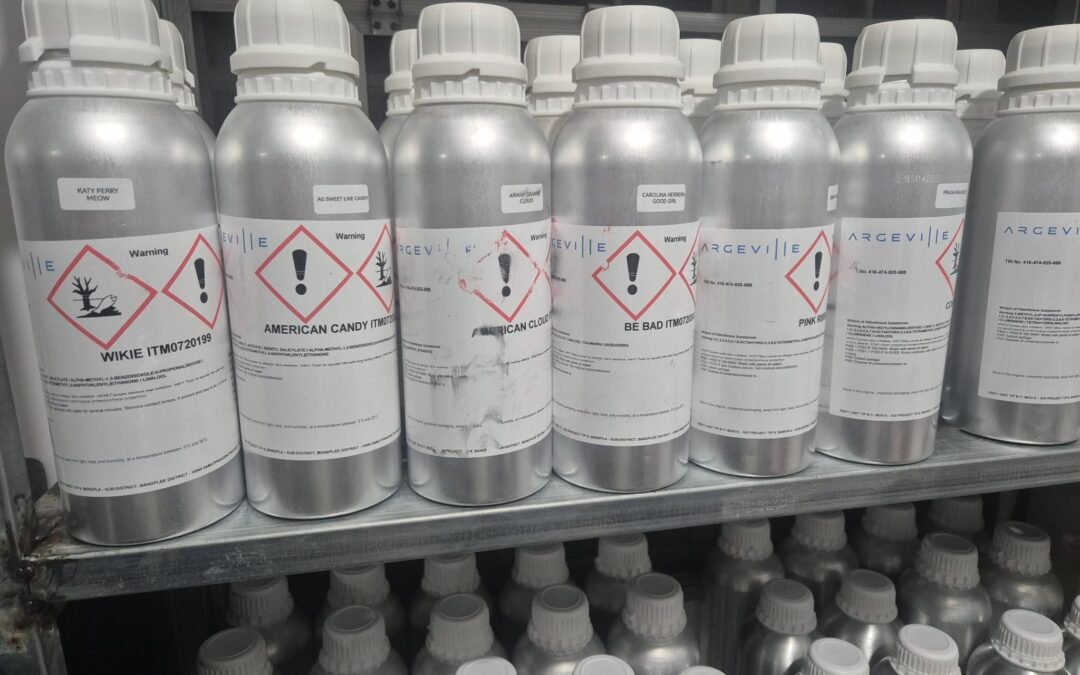
by fragranceshop.ph | Dec 8, 2025 | Fragrance Oil
What Makes Argeville Fragrance Oils Different?
Not all fragrance oils are the same. Some are weak, watery, or evaporate fast. Argeville oils stand out because they are:
✔ Highly Concentrated
These oils are created with premium aroma compounds, giving you perfumes that are:
Even small amounts go a long way.
✔ Perfume-Industry Standard
Argeville supplies fragrance materials to international perfume houses. Their formulations follow strict IFRA standards to ensure safety, stability, and performance.
✔ Consistent Quality
Every batch maintains the same quality—perfect for professional perfume production and large-scale orders.
🌍 Direct Supplier in the Philippines
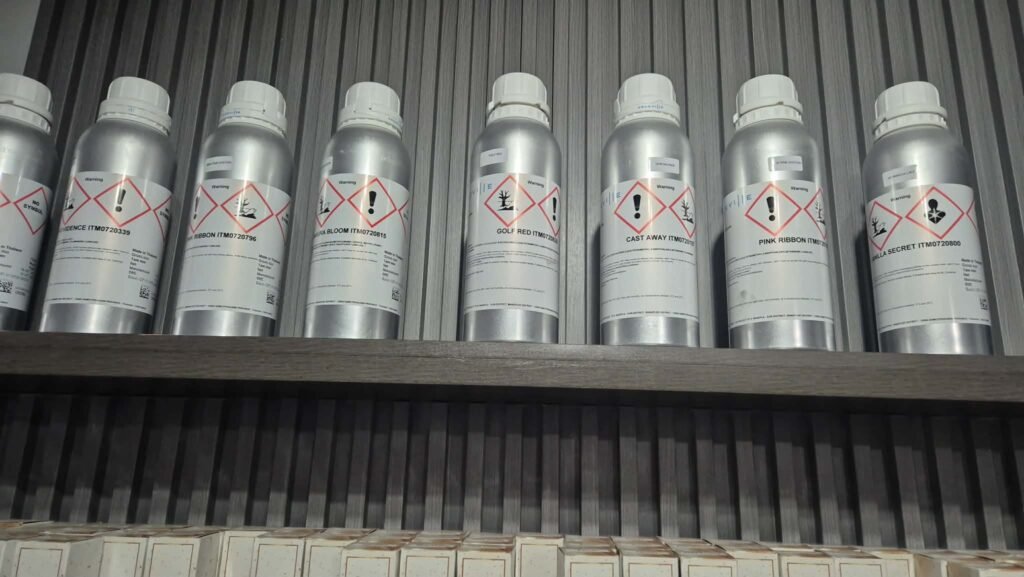
Many suppliers buy from resellers, which increases the price and can affect freshness.
At FragranceShop.ph:
➡️ We source fragrance oils directly
➡️ No middlemen, no long chain of resellers
➡️ Stocks are replenished fresh and regularly
This means:
Whether you are creating 20 bottles or 20,000, consistency is guaranteed.
🔥 Also Known as Dubai Fragrance Oils
In the perfume community, these oils are often called Dubai Oils because they carry the luxurious character associated with Middle Eastern perfumery:
If you like blends with oud, amber, musk, saffron, and spices, these oils are an excellent choice. But Argeville also offers fresh citrus, floral gourmand, and aquatic notes — ideal for everyday wear.
👃 Wide Variety of Scents Available
FragranceShop.ph currently carries 100+ premium variants including:
-
Fresh & Clean
-
Floral & Sweet
-
Musky & Woody
-
Oud & Oriental
-
Fruity & Sweet
-
Inspired scents
You can use them for:
✔ Perfume making
✔ Rebranding
✔ Hotel & spa products
✔ Home & room sprays
✔ Candle making
✔ Diffusers
Whether you’re a DIY hobbyist or a perfume brand owner, you’ll find scents that inspire creativity.
📦 Available Per Liter & Bulk
To support businesses, we offer:
-
Per Liter
-
5 Liters
-
Wholesale volumes
-
Distributor price
Ordering is easy and fast, with nationwide delivery.
🧴 Perfect for Small and Large Businesses
Thousands of local businesses are growing their perfume brand using Dubai oils from FragranceShop.ph. They choose us because we provide:
Many resellers and brand owners also appreciate that oils are:
🟢 Fresh
🟢 Consistent
🟢 Tested and reviewed
🟢 Suitable for high-concentration perfumes (25%–35%)
✨ Why Choose FragranceShop.ph?
Here are the top reasons why customers keep coming back:
⭐ Direct supplier of Argeville oils
⭐ Premium Dubai oils at competitive price
⭐ More than 100 scents available
⭐ Trustworthy reviews and repeat clients
⭐ Bulk orders welcome
If you want to create perfumes that smell luxurious and last long, this is the oil you need.
🛍️ Final Thoughts
Building a perfume business is easier when you start with the right foundation — quality fragrance oils.
With Argeville Fragrance Oils, you get:
And with FragranceShop.ph as your direct supplier, you can focus on growing your brand, knowing your materials are premium and consistent.
you can message us at our facebook page @ https://www.facebook.com/fragranceoilshop
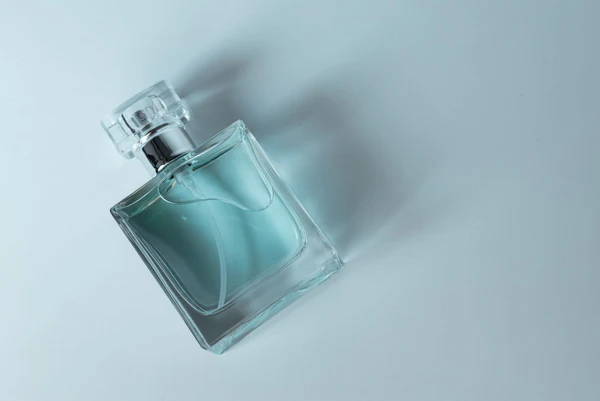
by fragranceshop.ph | Jul 14, 2025 | Blog
The fragrance business in the Philippines is thriving, offering great opportunities for entrepreneurs to build profitable brands. One of the most popular ways to enter the market is by launching your own private label perfume brand—without the need to create scents from scratch. With a trusted supplier like FragranceShop.ph, starting your signature perfume line becomes simple, affordable, and scalable.
In this guide, you’ll learn step-by-step how to start your own perfume brand, from product selection to marketing strategies.
What is a Private Label Perfume Brand?
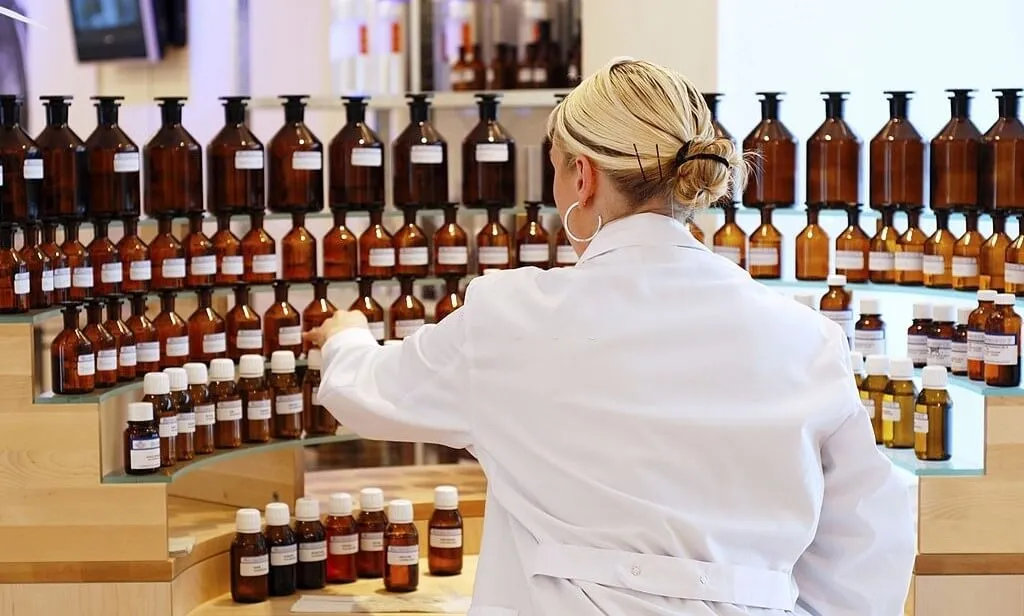
Private label perfume allows you to sell fragrances under your own brand without handling the production process. You choose the scents, packaging, and labeling, while a supplier like FragranceShop.ph takes care of manufacturing.
This business model is ideal for:
- Entrepreneurs entering the beauty market
- Boutique or store owners
- Corporate gifting businesses
Globally, the fragrance market is expected to surpass $70 billion by 2030, proving there’s never been a better time to start.
Step 1: Build Your Brand Identity
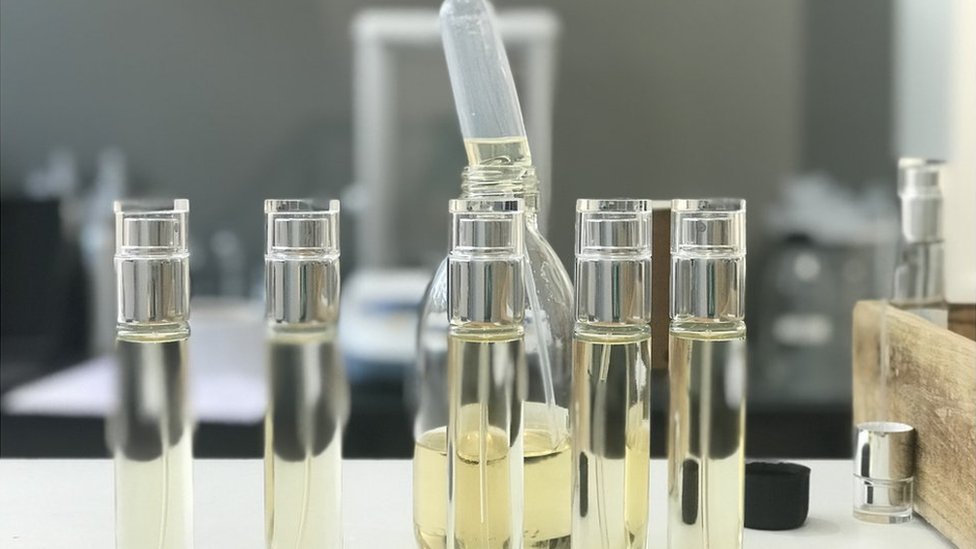
Before you launch, define your niche:
- Who is your target audience? (luxury, budget, unisex, youth)
- What type of image will your brand have? (minimalist, elegant, trendy)
Your brand identity helps you choose the right perfume collection and packaging style. For example, fresh aquatic scents are ideal for the tropical climate in the Philippines, while sweet gourmand notes appeal to younger markets.
Step 2: Choose High-Quality Scents
With FragranceShop.ph, you can choose from various fragrance profiles:
- Designer-inspired scents
- Floral, fruity, oriental, or musky blends
- Unisex or gender-specific fragrances
Start by ordering a sample pack to test the quality and pick the best options for your brand.
💡 According to Fragrantica, scents that balance freshness and warmth tend to be top sellers, especially in humid countries.
Step 3: Select Bottles and Packaging
Packaging influences customer perception. You can choose from various bottle designs, including elegant glass bottles and travel-friendly atomizers.
Pair them with customized labels or gift boxes to create a polished final product. Premium packaging makes your brand feel exclusive, even if you’re starting small.
Step 4: Create Your Branding
Your perfume needs a unique identity. Essentials to prepare include:
- Brand name and logo
- Creative perfume names
- Label design
- Engaging product descriptions
You can register your brand with the Intellectual Property Office of the Philippines to secure your trademarks.
Step 5: Order in Bulk for Better Margins
One benefit of working with FragranceShop.ph is flexible order quantities. You can start with starter packs and scale up to bulk orders for better profit margins.
✅ Low minimum order quantities
✅ Wholesale pricing
✅ Fast nationwide shipping
Ordering in bulk helps you reduce costs and maximize earnings.
Step 6: Start Selling Online and Offline
You can sell your perfume brand through:
- Social media platforms like Facebook, Instagram, and TikTok
- Online marketplaces such as Shopee and Lazada
- Local bazaars or pop-up stalls
Many entrepreneurs also use their own online store or collaborate with retail stores for consignment opportunities.
Step 7: Expand Your Product Line
As your brand grows, you can introduce:
- More perfume variants
- Refill options for eco-conscious buyers
- Seasonal limited editions
- Scented candles, reed diffusers, or car fresheners
Adding variety helps you capture a wider market and build customer loyalty.
Why Choose FragranceShop.ph?
FragranceShop.ph is a reliable partner for your private label perfume business:
- High-quality fragrance oils
- Complete packaging options
- Competitive wholesale pricing
- Personalized support for small businesses
From sample testing to finished products, they guide you throughout your business journey.
Final Thoughts
Launching your own perfume brand is a rewarding business opportunity, especially with a supportive supplier like FragranceShop.ph. By following these steps, you can confidently start a fragrance business with low capital and scale it to success.
👉 Ready to start your perfume brand? Visit FragranceShop.ph and explore the options to make your dream a reality.
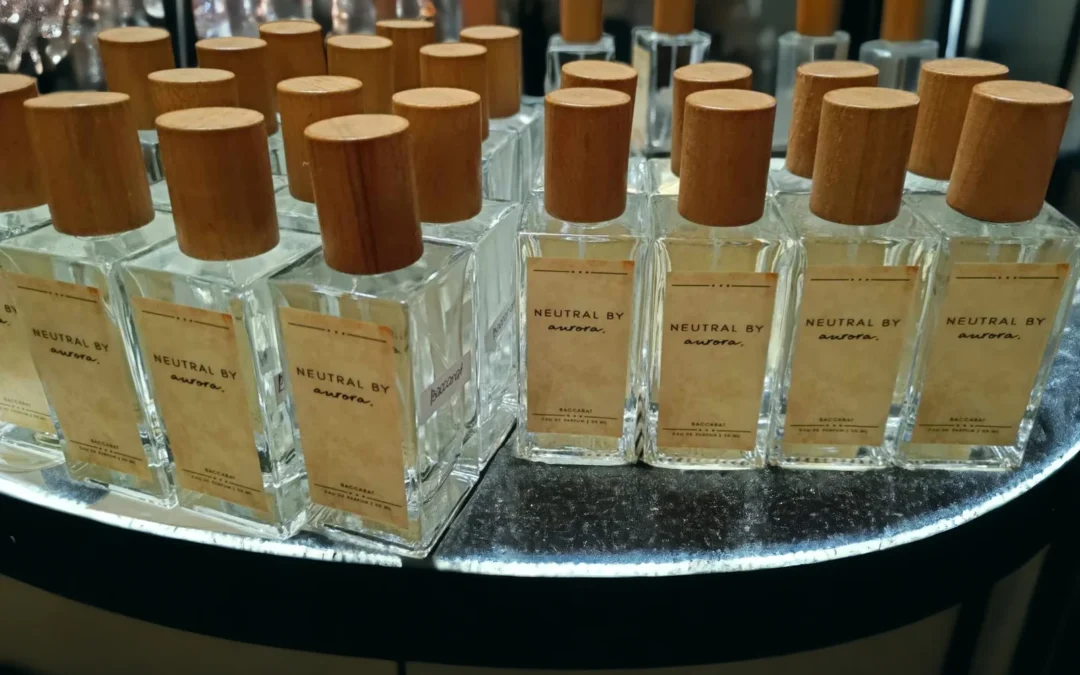
by fragranceshop.ph | Jul 2, 2025 | Blog
The perfume industry in the Philippines has experienced steady growth in recent years, with local brands and resellers making their mark in both online and offline markets. As consumer preferences shift toward unique, affordable, and personalized fragrances, starting your own perfume business can be a lucrative venture—if done right.
In this comprehensive guide, we’ll walk you through the essential aspects of launching a perfume business in the Philippines, including legal registration, logistical considerations, and sourcing from trusted suppliers. Whether you’re starting small from home or planning to scale into retail, this article will help you navigate the journey with confidence.
1. Understanding the Market Opportunity

Filipinos love smelling good. From budget-friendly body mists to designer-inspired scents, there’s strong demand for fragrances across all market segments—especially in urban areas like Metro Manila, Cebu, and Davao. Online platforms such as Shopee, Lazada, TikTok Shop, and Facebook Marketplace have also lowered the barrier for entry, allowing even small-scale sellers to reach national audiences.
Key Trends Driving Growth:
- Affordable alternatives to luxury brands
- Refillable and eco-friendly packaging
- Personalized or “signature” scents
- Inspired and oil-based perfumes
- DIY perfume kits and white-label rebranding
Before diving into legal and operational steps, it’s important to define your business model: Will you resell branded perfumes? Create your own scent line? Offer customized blends? Your answer will shape every decision ahead.
2. Legal Requirements: Registration and Compliance

Starting any business in the Philippines requires compliance with local laws. Below are the key steps to legitimize your perfume business:
A. Business Registration
- Choose a business structure
- Sole Proprietorship (easiest and most common for small startups)
- Partnership or Corporation (ideal if you have co-founders or investors)
- Register with DTI or SEC
- DTI (Department of Trade and Industry) for sole proprietors: https://bnrs.dti.gov.ph/
- SEC (Securities and Exchange Commission) for partnerships or corporations: https://www.sec.gov.ph/
- Get your Business Permit from the City or Municipality
Go to your local government unit (LGU) where your store or office will be located. You’ll need:
- Barangay clearance
- Mayor’s permit
- Zoning clearance
- Register with BIR (Bureau of Internal Revenue)
- Secure your TIN (Tax Identification Number)
- Apply for an official BIR-printed receipt or authority to print your own
- Register your books of accounts
B. FDA Notification
If you’re manufacturing or importing perfume products, the Food and Drug Administration (FDA) considers them cosmetics. You must secure:
- Certificate of Product Notification (CPN)
- If you’re manufacturing, a License to Operate (LTO) as a cosmetic manufacturer
More details: https://www.fda.gov.ph
C. Intellectual Property
If you’re building your own brand, consider trademarking your brand name and logo via the Intellectual Property Office of the Philippines (IPOPHL) to protect your brand identity.
3. Logistics: Packaging, Storage, and Delivery
After legal registration, logistics becomes the next critical area of focus. Perfume—especially those in glass bottles or oil-based blends—requires careful storage and transport.
A. Sourcing Packaging Materials
Packaging plays a major role in your brand’s appeal. In the Philippines, many local suppliers now offer:
- Glass perfume bottles (crimp or spray types)
- Bamboo caps and metallic covers
- Roll-ons, tester vials, and sample sprays
- Custom labels and boxes
Pro Tip: Start with low minimum order quantity (MOQ) suppliers to test the market without huge capital.
B. Storage Guidelines
- Avoid direct sunlight to preserve fragrance quality
- Cool, dry storage areas are ideal
- Label every batch properly to ensure inventory and expiration tracking
C. Delivery Options
Whether selling online or via retail, reliable shipping partners are essential. Popular options include:
- J&T Express, LBC, Ninja Van, and Flash Express
- Use GrabExpress or Lalamove for same-day Metro Manila deliveries
- For regional orders, bundle packaging securely with bubble wrap or foam fillers
If you’re shipping alcohol-based perfumes, check courier restrictions—some require special declarations due to flammability.
4. Sourcing Suppliers: Raw Materials and Fragrance Oils
Finding high-quality, reliable perfume suppliers is crucial. Your supplier affects your product’s longevity, projection, and safety.
A. Where to Find Local Suppliers
- Divisoria and Binondo, Manila – large selection of packaging materials and fragrance bottles at wholesale prices
- Online B2B platforms – such as fragranceshop.ph which offers raw materials and perfume rebranding services
- Facebook groups and Shopee resellers – useful for small-volume orders or samples
B. What to Look for in a Supplier
- Product quality and scent retention
- Transparent pricing and MOQ terms
- Availability of Certificates of Analysis (COA) or Material Safety Data Sheets (MSDS)
- Customer support and delivery timelines
- Customization services for branding
C. Sample List of Raw Materials
- Fragrance oils (inspired by designer scents or original blends)
- DPG (Dipropylene Glycol) or Ethanol base
- Fixatives (to help scent last longer)
- Essential oils (for natural-based lines)
- Glass bottles, atomizers, and caps
- Branded labels and packaging
Tip: Test each scent on both paper and skin before finalizing. Some oils react differently with body chemistry.
5. Capital, Cost Breakdown, and Pricing Strategy
You don’t need millions to get started. A home-based perfume business can begin with as little as ₱5,000–₱20,000, depending on your initial inventory and packaging quality.
A. Sample Capital Breakdown for a Starter Kit
| Item |
Estimated Cost |
| 10 pcs 50ml glass bottles |
₱400 |
| 100ml fragrance oil |
₱700 |
| 200ml DPG or ethanol |
₱150 |
| Packaging and labels |
₱300 |
| FDA product notification (optional) |
₱2,000+ |
| Marketing budget (FB ads, Shopee listing) |
₱500–₱1,000 |
| Total |
₱4,000–₱6,000 |
B. Suggested Retail Price (SRP)
- 10ml roll-on: ₱80–₱120
- 30ml spray: ₱150–₱250
- 50ml spray: ₱250–₱400
Pricing varies based on branding, packaging aesthetics, and fragrance longevity.
6. Marketing and Selling Online
With platforms like TikTok Shop, Facebook Live, Shopee, and Lazada, there’s no excuse not to start selling online—even without a physical store.
A. Build Your Brand Identity
- Create a compelling logo and scent story
- Offer sample kits or “pabango bundles”
- Engage in local perfume communities and social media groups
- Collect real user reviews and testimonials
B. Leverage Social Media
- Use trending hashtags like #PabangoPH, #PerfumeSupplierPH, #FragranceForLess
- Run giveaways and use TikTok challenges to go viral
- Share behind-the-scenes content like bottle filling, label printing, or scent blending
C. Consider Reseller and Affiliate Programs
Scaling fast? Offer bulk discounts or reseller kits for aspiring perfume sellers. Provide marketing assets they can use, and consider commission-based incentives.
7. Final Tips Before Launch
- Test, refine, and rebrand if needed. Don’t rush to scale until you’ve received positive market feedback.
- Start small but think big. Focus on a few core fragrances that represent your brand well.
- Comply with labeling laws. Include ingredients, volume, production date, and expiry where needed.
- Document your formulas. If you’re blending scents, maintain consistency across batches.
- Treat every customer as a reviewer. Early feedback can make or break your brand’s reputation.
Conclusion
Starting a perfume business in the Philippines is not only feasible—it’s full of potential. By carefully managing your legal obligations, choosing the right logistics partners, and sourcing high-quality raw materials from trusted suppliers like FragranceShop.ph, you can build a brand that resonates with Filipino consumers.
Whether you’re planning to resell inspired scents, build your own unique perfume line, or offer rebranding services to others, the fragrance industry is wide open for passionate entrepreneurs.
So go ahead—blend your dreams into a bottle and make your mark in the thriving world of Philippine perfumery.
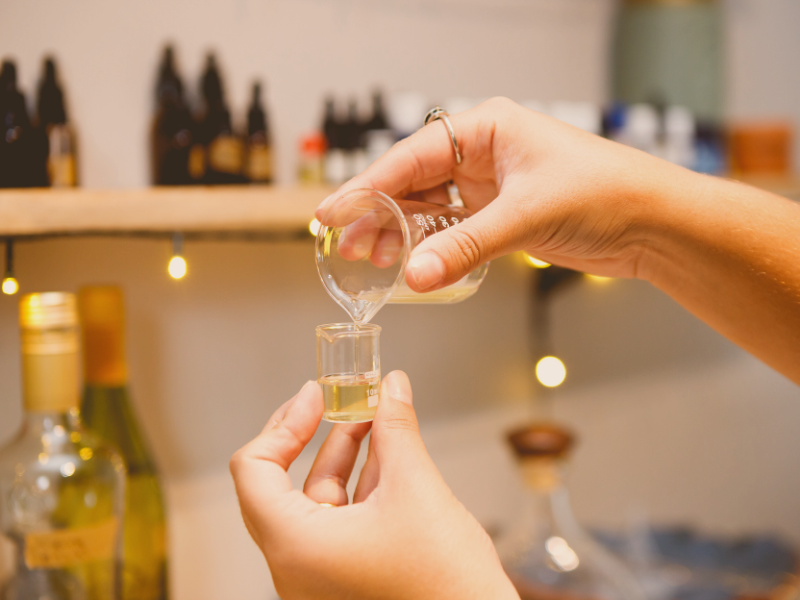
by fragranceshop.ph | Jun 24, 2025 | Blog
In today’s highly competitive fragrance market, branding is everything. With hundreds of scents available online and in stores, consumers don’t just buy perfumes for how they smell—they buy the story, the lifestyle, and the identity that come with it. That’s where rebranding comes in. If you’re a perfume business in the Philippines looking to reposition your brand, this ultimate guide will walk you through everything you need to know about perfume rebranding.
What is Perfume Rebranding?
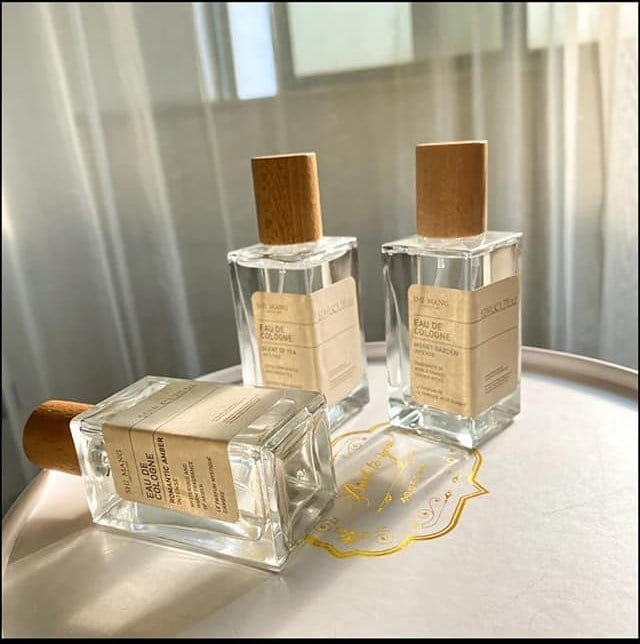 Perfume rebranding is the strategic process of changing your perfume brand’s image, identity, and market positioning. This may involve updates to your logo, packaging, scent formulation, messaging, target audience, or even the brand name itself.
Perfume rebranding is the strategic process of changing your perfume brand’s image, identity, and market positioning. This may involve updates to your logo, packaging, scent formulation, messaging, target audience, or even the brand name itself.
Whether you’re reviving an outdated line, reaching a new audience, or bouncing back from a dip in sales, rebranding helps breathe new life into your fragrance business.
Why Rebrand Your Perfume Business in the Philippines?

The Philippine market for perfumes is booming. According to Statista, revenue in the fragrances segment is projected to reach over $250 million by 2025. With more Filipinos engaging in small businesses, rebranding is an effective way to stay ahead.
Here are key reasons why you might consider rebranding:
- Your brand feels outdated
- Your sales are declining
- You’re launching a new product line
- Your current branding doesn’t reflect your vision
- You want to compete with imported or niche perfumes
Rebranding allows you to remain relevant and competitive in an ever-evolving local market.
Key Elements of a Successful Perfume Rebrand
1. Brand Identity Overhaul
Your brand identity includes your logo, brand colors, typeface, and tone of voice. In the Philippines, it’s important to consider cultural trends and local preferences—Filipinos often respond well to brands that feel relatable, elegant, and aspirational.
2. Packaging Redesign
The right packaging can make a huge difference in sales. From elegant glass bottles to eco-friendly refill options, your packaging should reflect your new brand story.
3. Scent Profile Update
Sometimes, the rebranding process includes tweaking or introducing new scent profiles. You might keep your best-sellers but add trendy or seasonal options that match your new image.
4. Target Market Analysis
Define who your new audience is. Are you targeting Gen Z students, working moms, or male professionals? Knowing this helps guide your messaging and product development.
5. Digital Presence Revamp
An updated website, new product photos, SEO-friendly blogs, and a consistent social media presence are vital. This includes internal links to your rebranding services like this one: Perfume Rebranding Services.
Step-by-Step: How to Rebrand Your Perfume Business in the Philippines
Step 1: Audit Your Current Brand
Evaluate what is and isn’t working. Gather feedback from customers, analyze sales data, and review online engagement.
Step 2: Set Clear Goals
Do you want to increase sales, reposition your brand, or enter a new niche? Define measurable objectives.
Step 3: Develop a New Brand Strategy
This includes choosing a new brand name (if needed), logo, tagline, and brand messaging.
Step 4: Update Your Product Packaging
Work with local designers and packaging suppliers to create designs that resonate with your target market.
Step 5: Redefine Your Scent Line-Up
Identify which scents to keep, retire, or improve. Collaborate with local or international perfumers if you want unique formulations.
Step 6: Launch Your New Brand
Create a marketing launch plan. Offer rebrand-exclusive promotions and share your rebranding story on your platforms.
Step 7: Promote Through Local Channels
Maximize visibility by collaborating with influencers, running Facebook ads, or getting featured in Filipino lifestyle blogs.
Common Rebranding Mistakes to Avoid
- Inconsistent messaging
- Not informing loyal customers properly
- Rushing the rollout
- Over-complicating the design
- Failing to research competitors and trends
Take the time to execute your rebranding well, as poor implementation can confuse or alienate existing customers.
Real Success Stories in the Philippine Perfume Market
- Homegrown Labels Turned Premium Brands Several local perfume startups have successfully repositioned from “budget” to “luxury” status just by improving branding, packaging, and storytelling.
- TikTok Rebrands Brands that embraced Filipino Gen Z humor and trends saw viral success on TikTok, leading to increased sales.
- Influencer-Driven Transformations Some Filipino perfumers rebranded and partnered with local celebrities, gaining mainstream recognition.
How FragranceShop.ph Can Help
At FragranceShop.ph, we specialize in helping Filipino entrepreneurs rebrand their perfumes with high-quality packaging, bulk fragrance oils, and custom branding support.
Our services include:
- Custom logo and bottle design
- Scent development
- Label printing
- Bottle sourcing
- Private label packaging
We are committed to making your rebranding journey smooth, stylish, and successful.
Final Thoughts
Perfume rebranding in the Philippines is more than just a marketing trend—it’s a smart business move in a growing industry. Whether you’re reinventing an old brand or launching something fresh, the key is staying true to your new identity while delivering value to your customers.
By taking a strategic approach and working with local experts like FragranceShop.ph, your brand can thrive in the highly competitive world of fragrances.
Ready to rebrand? Explore our full Perfume Rebranding Services here.
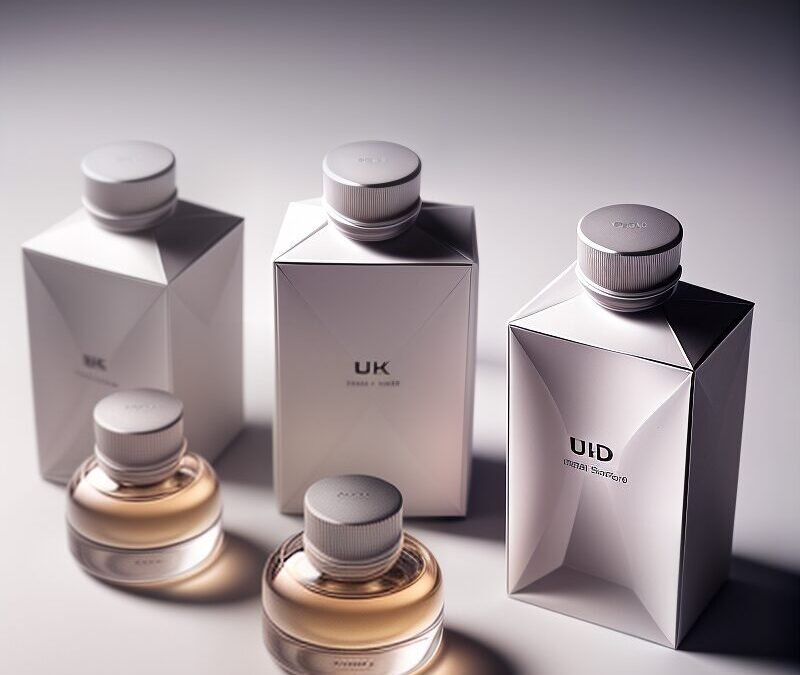
by fragranceshop.ph | Jun 25, 2024 | Blog

The perfume industry is a unique blend of art and science, where creativity meets meticulous craftsmanship. Rebranding a perfume is a delicate process that requires a deep understanding of both the product and the market. As a perfumery expert, I’ve seen numerous rebranding efforts succeed and fail. Here, I share comprehensive insights and tips from industry experts on how to successfully launch a rebranded perfume.
Understanding the Need for Rebranding
Rebranding a perfume can be driven by various factors:
- Market Evolution: Consumer preferences change over time. A scent that was popular a decade ago might not appeal to today’s audience.
- Company Vision: Brands evolve, and their products need to reflect this evolution.
- Competitive Landscape: New competitors and trends can make an older brand feel outdated.
- Sales Performance: If a perfume isn’t performing well, rebranding might be a strategy to revive its fortunes.
Steps to Successfully Launch a Rebranded Perfume
-
Conduct Comprehensive Market Research
- Consumer Insights: Understand the current preferences and trends in the fragrance market. Use surveys, focus groups, and social media analysis to gather data.
- Competitive Analysis: Study successful rebranding efforts by competitors. Identify what worked and what didn’t.
- Brand Audit: Evaluate your brand’s current perception in the market. Identify strengths, weaknesses, opportunities, and threats.
-
Define Your Rebranding Objectives
- Clear Goals: Establish clear, measurable objectives for the rebrand. Are you aiming to reach a new demographic? Increase sales? Improve brand perception?
- Brand Story: Develop a compelling brand story that aligns with your objectives. This story should resonate with your target audience and reflect your brand’s values.
-
Revise the Fragrance Profile
- Consult Perfumers: Work closely with expert perfumers to tweak or completely revamp the fragrance. Ensure it aligns with current trends while maintaining a unique identity.
- Consumer Testing: Conduct blind tests with a segment of your target audience to gauge their reaction to the new scent. Use their feedback to refine the fragrance.

4. Redesign the Packaging
-
- Visual Appeal: Modernize the packaging to reflect the new brand identity. This includes the bottle design, label, and outer packaging.
- Functionality: Ensure the packaging is user-friendly and practical.
- Sustainability: Consider eco-friendly materials to appeal to environmentally conscious consumers.
5. Develop a Strategic Marketing Plan
-
- Launch Campaign: Plan a multi-channel launch campaign that creates buzz around the rebrand. Utilize social media, traditional media, and influencer partnerships.
- Storytelling: Use compelling storytelling to convey the rebrand’s narrative. Highlight the reasons for the rebrand and what consumers can expect.
- Sampling: Distribute samples through various channels to allow potential customers to experience the new fragrance firsthand.
6. Engage with Your Audience
-
- Social Media: Leverage social media platforms to engage with your audience. Use interactive content like polls, Q&A sessions, and behind-the-scenes footage to build excitement.
- Influencers and Ambassadors: Partner with influencers and brand ambassadors who align with your brand values. Their endorsement can significantly boost your reach and credibility.
- Customer Feedback: Encourage and listen to customer feedback post-launch. This will help you make necessary adjustments and demonstrate that you value their input.
7. Monitor and Measure Success
-
- Sales Metrics: Track sales performance before and after the rebrand to measure its impact.
- Brand Perception: Use surveys and social listening tools to assess changes in brand perception.
- Market Share: Analyze market share changes to determine if you’re successfully capturing your target audience.
Expert Tips for a Successful Rebrand
- Maintain Authenticity
- While rebranding, it’s crucial to stay true to your brand’s core values. Authenticity resonates with consumers and builds long-term loyalty.
- Innovate Thoughtfully
- Innovation should enhance the brand, not alienate existing customers. Introduce changes gradually and ensure they align with consumer expectations.
- Communicate Transparently
- Be transparent about why you’re rebranding. Consumers appreciate honesty and are more likely to support a brand that communicates openly.
- Leverage Heritage
- If your brand has a rich history, use it to your advantage. Highlighting your heritage can create a sense of trust and continuity amidst the changes.
- Invest in Quality
- Quality should never be compromised. Whether it’s the fragrance itself, the packaging, or the marketing materials, ensure everything reflects high standards.
- Stay Agile
- The market is dynamic, and consumer preferences can shift quickly. Stay agile and be ready to adapt your strategies based on real-time feedback and market trends.
Case Study: A Successful Perfume Rebrand
To illustrate these tips, let’s look at a real-world example: the rebranding of “Old Classic” by Luxe Fragrances.
Background: “Old Classic” was a popular perfume in the 1990s but had seen declining sales in recent years. Luxe Fragrances decided to rebrand it to appeal to modern consumers.
Rebranding Process:
- Market Research: Luxe Fragrances conducted extensive market research to understand contemporary fragrance trends and consumer preferences.
- Fragrance Update: The perfume was reformulated to include more modern notes while retaining a hint of its original scent to maintain brand continuity.
- Packaging Redesign: The bottle and packaging were redesigned to be sleek and minimalist, appealing to current aesthetic trends.
- Marketing Campaign: A robust marketing campaign was launched, featuring social media influencers and a series of storytelling ads that highlighted the brand’s heritage and the journey of the rebrand.
Results:
- Sales: The rebranded “Old Classic” saw a 50{d845f68d437dbcb4eb9bbbc65ea5727df097c38bab47ee25df9accf738a19594} increase in sales within the first six months of the launch.
- Brand Perception: Surveys indicated a significant improvement in brand perception, particularly among younger consumers.
- Market Share: Luxe Fragrances regained market share in the competitive fragrance market, establishing “Old Classic” as a modern favorite.
Conclusion
Rebranding a perfume is a complex but rewarding process. By understanding the market, setting clear objectives, revising the fragrance profile, redesigning packaging, developing a strategic marketing plan, and engaging with your audience, you can successfully launch a rebranded perfume. The key is to balance innovation with authenticity, ensuring that your rebrand resonates with both new and existing customers. With these expert tips and strategies, you can navigate the challenges of rebranding and achieve lasting success in the dynamic perfume industry.
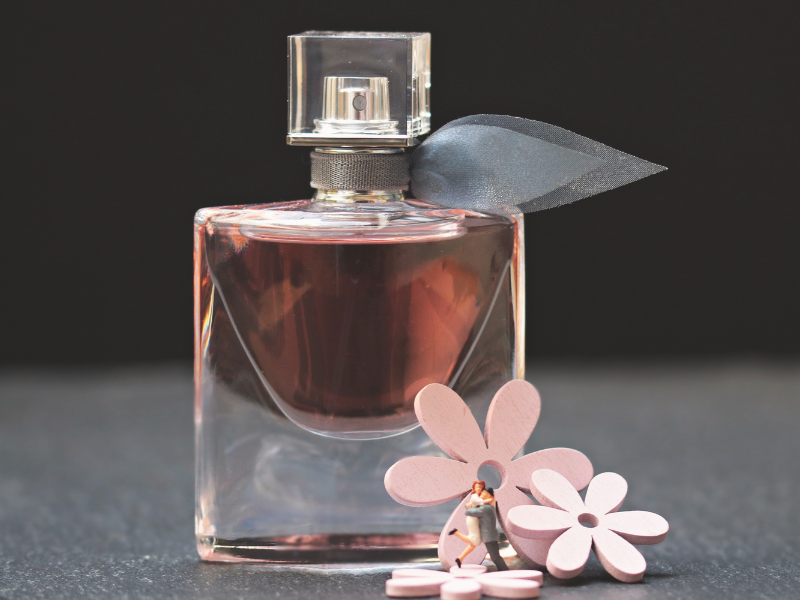
by fragranceshop.ph | May 31, 2024 | Blog

by fragranceshop.ph | May 31, 2024 | Blog
In recent years, the fragrance industry has witnessed a significant shift towards unisex perfumes, breaking away from the traditional gender-specific scents. This trend reflects broader changes in societal attitudes towards gender and personal identity. Unisex perfumes are designed to be worn by anyone, regardless of gender, offering versatile and inclusive scent options. In this article, we will explore the history, reasons behind the rise of unisex perfumes, and their impact on the fragrance industry.
The History of Unisex Perfumes

The concept of unisex fragrances is not entirely new. In ancient times, perfumes were not created with gender-specific formulations. Both men and women used the same scents made from natural ingredients like flowers, spices, and herbs. It was only in the 20th century that perfumes began to be marketed specifically towards men or women, with floral and sweet notes for women and musky or woody notes for men.
The modern unisex perfume movement can be traced back to the 1990s when Calvin Klein launched CK One in 1994. CK One was a revolutionary fragrance, marketed as a “shared” scent for both men and women. It featured a fresh, clean, and light composition that appealed to a broad audience. The success of CK One paved the way for other brands to experiment with unisex fragrances.
Changing Societal Attitudes
One of the primary drivers behind the rise of unisex perfumes is the changing societal attitudes towards gender and identity. Today, there is a growing acceptance and celebration of non-binary and fluid gender identities. People are increasingly rejecting traditional gender norms and seeking products that align with their personal identity rather than societal expectations.
Unisex perfumes cater to this shift by offering scents that do not conform to gender stereotypes. They allow individuals to express themselves authentically, without being confined to fragrances deemed “appropriate” for their gender. This inclusivity has resonated with consumers, particularly younger generations who prioritize self-expression and individuality.
The Appeal of Unisex Perfumes
Unisex perfumes have several appealing qualities that contribute to their popularity:
- Versatility: Unisex fragrances are designed to be versatile, making them suitable for various occasions and settings. Whether it’s a formal event, a casual outing, or a day at work, unisex perfumes can be worn comfortably by anyone.
- Neutrality: These perfumes often feature a balanced blend of notes that do not lean heavily towards traditionally masculine or feminine scents. This neutrality makes them appealing to a wider audience, as they are less likely to evoke strong reactions based on gender associations.
- Innovation: The rise of unisex perfumes has encouraged fragrance brands to experiment with unique and unconventional scent combinations. This innovation has led to the creation of new, exciting fragrances that stand out in the market.
- Simplicity: Many unisex perfumes are characterized by their simplicity and minimalism. They often feature clean, fresh, and natural notes, which are easy to wear and enjoy.
Impact on the Fragrance Industry

The growing demand for unisex perfumes has had a significant impact on the fragrance industry. Brands are increasingly launching unisex collections and rebranding existing products to appeal to a broader audience. This shift has also influenced the marketing and packaging of fragrances, with many brands adopting more gender-neutral designs and advertising campaigns.
Market Growth
According to industry reports, the global unisex perfume market is expected to grow significantly in the coming years. This growth is driven by the increasing acceptance of gender-neutral products and the rising demand for inclusive beauty and personal care items. Major fragrance houses and niche brands alike are tapping into this trend, offering a diverse range of unisex perfumes to meet consumer needs.
Niche Brands Leading the Way
While established brands like Calvin Klein and Tom Ford have successfully ventured into the unisex perfume market, many niche brands are also gaining recognition for their innovative unisex offerings. Brands such as Byredo, Le Labo, and Escentric Molecules are known for their unique and high-quality unisex fragrances that appeal to fragrance enthusiasts worldwide.
Consumer Preferences
Consumer preferences are also evolving, with many people now seeking fragrances that reflect their personal style rather than conforming to gender norms. This shift has led to a more diverse and inclusive fragrance market, where consumers have the freedom to choose scents based on their preferences and moods.
Popular Unisex Perfumes
Here are some popular unisex perfumes that have garnered a loyal following:
- CK One by Calvin Klein: The pioneer of modern unisex fragrances, CK One remains a popular choice for its fresh and clean scent.
- Molecule 01 by Escentric Molecules: Known for its unique, single-note composition, Molecule 01 adapts to the wearer’s skin, creating a personalized scent experience.
- Santal 33 by Le Labo: With its warm and woody notes, Santal 33 has become a cult favorite among fragrance lovers.
- Gypsy Water by Byredo: This unisex fragrance features a blend of fresh and earthy notes, evoking a sense of wanderlust and adventure.
- Tom Ford Neroli Portofino: A refreshing and vibrant scent, Neroli Portofino is inspired by the Italian Riviera and is perfect for both men and women.
Conclusion
The rise of unisex perfumes reflects a broader cultural shift towards inclusivity and the rejection of traditional gender norms. These fragrances offer versatility, neutrality, and innovation, making them appealing to a diverse audience. As societal attitudes continue to evolve, the demand for unisex perfumes is expected to grow, further shaping the future of the fragrance industry.
FragranceShop.ph is an excellent resource for sourcing fragrance oils and ingredients to create your own unisex perfumes. Their extensive range of high-quality products can help you develop unique and inclusive scents that cater to the modern consumer.
In summary, unisex perfumes represent a significant and positive change in the fragrance world. They allow individuals to express their true selves and enjoy scents that resonate with their personal identity, irrespective of gender. The rise of unisex perfumes is a testament to the power of inclusivity and the ongoing evolution of the beauty and personal care industry.
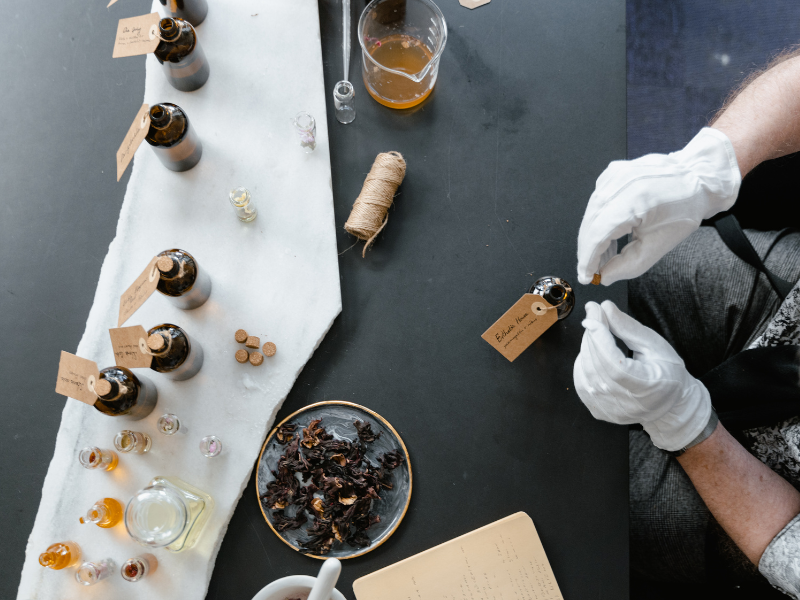
by fragranceshop.ph | May 10, 2024 | Blog
The Philippines’ increasing demand for personal care and luxury items presents an exciting opportunity for entrepreneurs to venture into the perfume industry. This guide covers everything from market analysis to the launch and expansion of your perfume business.
Market Research
Identifying Your Target Market
Thorough market research is the cornerstone of a successful perfume business. Understanding the preferences of different demographics, such as age, gender, and economic status, will help tailor your products to meet consumer needs. Surveys, focus groups, and studying industry reports can yield valuable insights into what scents and product types will likely succeed.
Competitive Analysis
Examine the offerings of existing players in the perfume market. Note what products are available, their price points, marketing strategies, and customer reviews. This analysis will help you identify market gaps and opportunities for differentiation, such as offering personalized scents or eco-friendly products.
Business Planning

Choosing a Business Model
Decide on a business structure. Will you create original perfumes, rebrand existing ones, or both? Each model has different implications for investment, production, and marketing. For instance, creating original perfumes allows for brand uniqueness but requires more investment in product development.
Drafting a Business Plan
Outline your business vision, objectives, target market, operational strategy, and financial projections in a detailed business plan. This document is crucial for guiding your business decisions and attracting investors or partners.
Legal and Regulatory Compliance
Registering Your Business
Secure the necessary registrations from the Department of Trade and Industry (DTI) for sole proprietorships or the Securities and Exchange Commission (SEC) for partnerships and corporations. Also, register your business with the Bureau of Internal Revenue (BIR) for tax purposes.
Securing FDA Approval
Obtain approval from the Food and Drug Administration (FDA) to ensure your perfumes are safe for consumer use. Compliance with safety standards is crucial to avoid legal issues and ensure consumer trust.
Product Development and Sourcing
Sourcing Quality Ingredients
Partner with reliable suppliers who can provide high-quality fragrance oils and other ingredients. FragranceShop.ph, for example, offers a range of quality fragrance oils essential for creating compelling and long-lasting scents.
Developing Your Product Line
Create a range of products that cater to various preferences and price points. Consider developing signature scents that can set your brand apart in the market. Invest in quality packaging that reflects the luxury and allure of your brand.
Branding and Marketing
Establishing a Brand Identity
Develop a strong brand identity that resonates with your target market. This includes your logo, packaging, and overall aesthetic. Your brand should reflect the quality and uniqueness of your perfumes and resonate with your intended customers.
Implementing a Marketing Strategy
Develop a comprehensive marketing strategy that includes online and offline marketing. Utilize social media platforms to reach a broader audience. Content marketing, SEO, and influencer collaborations can also be effective in building brand awareness and attracting customers.
Launching Your Website
Create a professional website that offers customers an easy and informative online shopping experience. Include detailed product descriptions, attractive images, and information about your business and production practices.
Sales Strategies
Choosing Sales Channels
Decide whether to sell your perfumes online, in physical stores, or through both channels. Online sales can help you reach a broader audience with lower overhead costs, while physical stores offer customers a firsthand experience of your products.
Distribution Methods
Plan effective distribution strategies to ensure your products reach your customers in excellent condition. If selling online, set up reliable logistics for order fulfillment and delivery.
Business Expansion

Expanding Market Reach
As your business grows, consider exploring new markets by introducing your products to international customers. This can be facilitated by participating in trade shows, online marketing, and establishing partnerships with overseas distributors.
Diversifying Product Offerings
Expand your product line to include related products such as body mists, scented candles, or home fragrances. This not only caters to existing customers but also attracts new ones.
Maintaining Business Growth
Focusing on Customer Satisfaction
Maintain high standards of customer service to ensure customer satisfaction and loyalty. Gather customer feedback regularly to improve your products and services.
Keeping Up with Industry Trends
Stay updated with the latest trends in the perfume industry and continually adapt your business strategies accordingly. This can involve adopting new technologies, exploring emerging markets, or updating your product designs based on consumer trends.
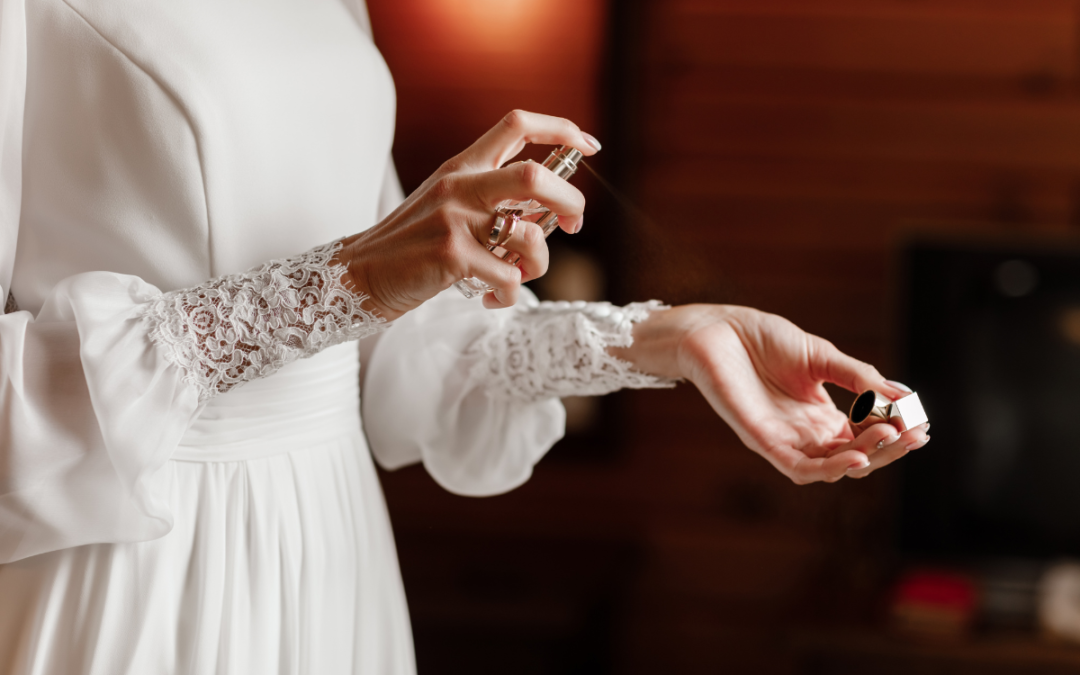
by fragranceshop.ph | Oct 23, 2023 | Blog
Introduction
Fragrance is a fine art that has dazzled the faculties for a really long time. It’s a method for self-articulation and a method for having an enduring effect. With the huge range of aromas accessible, understanding the various sorts of scent and their extraordinary characteristics is fundamental. In this article, we’ll take you on a fragrant excursion, investigating different sorts of scent and what separates them.
1. Eau de Cologne (EDC)
Eau de Cologne, frequently alluded to as Cologne, is one of the lightest types of scent. It regularly contains 2-5{d845f68d437dbcb4eb9bbbc65ea5727df097c38bab47ee25df9accf738a19594} fragrance oil, making it reviving and ideal for ordinary use. EDC is known for its citrusy and home grown notes, giving a spotless and strengthening fragrance that doesn’t overpower.
2. Eau de Toilette (EDT)
Eau de Toilette is a move forward concerning focus, containing around 5-15{d845f68d437dbcb4eb9bbbc65ea5727df097c38bab47ee25df9accf738a19594} scent oil. It’s a flexible decision for day to day wear and has a moderate life span. EDTs offer a fair mix of top, center, and base notes, making an agreeable and balanced fragrance.
3. Eau de Parfum (EDP)
Eau de Parfum is a famous decision for those looking for a more drawn out enduring scent. It regularly contains 15-20{d845f68d437dbcb4eb9bbbc65ea5727df097c38bab47ee25df9accf738a19594} fragrance oil, bringing about a more strong smell. EDPs can be very perplexing, with an articulated top note that develops into more profound, more extravagant base notes as the day goes on.
4. Parfum (Extrait de Parfum)
Parfum, or Extrait de Parfum, is the most focused type of fragrance, with a scent oil content of around 20-30{d845f68d437dbcb4eb9bbbc65ea5727df097c38bab47ee25df9accf738a19594}. This kind of aroma offers the longest-enduring fragrance, frequently enduring over the course of the day and into the night. Because of its high fixation, it’s ordinarily more costly however requires less application.
5. Eau Fraiche
Eau Fraiche is a less popular kind of scent, frequently confused with Eau de Cologne because of its softness. It contains an insignificant level of scent oil (around 1-3{d845f68d437dbcb4eb9bbbc65ea5727df097c38bab47ee25df9accf738a19594}) and has a high liquor content. Eau Fraiche is ideally suited for a speedy, invigorating eruption of scent, ideal for sweltering climate or post-rec center use.
6. Solid Perfume
Strong scents come as a medicine or wax and are turning out to be progressively well known because of their conveyability and maintainability. They offer an unpretentious and personal fragrance and are ideal for in a hurry final details.
7. Specialty and Distinctive Fragrances
Specialty and distinctive scents are made by more modest, free perfumers who center around one of a kind, top notch mixes. These fragrances frequently convey a particular person, and they take special care of the individuals who look for an aroma that is not efficiently manufactured.
8. Celebrity and Designer Perfumes
Celebrity and designer scents are made as a team with notable figures or laid out design houses. They are open and frequently take special care of a wide crowd. These aromas can go from light and new to intense and sensational, contingent upon the fashioner or big name’s vision.
Conclusion
Perfume is a fundamental part of individual style and self-articulation. Knowing the various sorts of scents assists you with picking the right aroma for the event and your character. Whether you favor the light and stimulating Eau de Cologne or the enduring extravagance of Parfum, there’s a fragrance to suit each inclination and way of life. Embrace the universe of scent and allowed your faculties to lead you on a fragrant excursion, investigating the different and brilliant universe of fragrances.


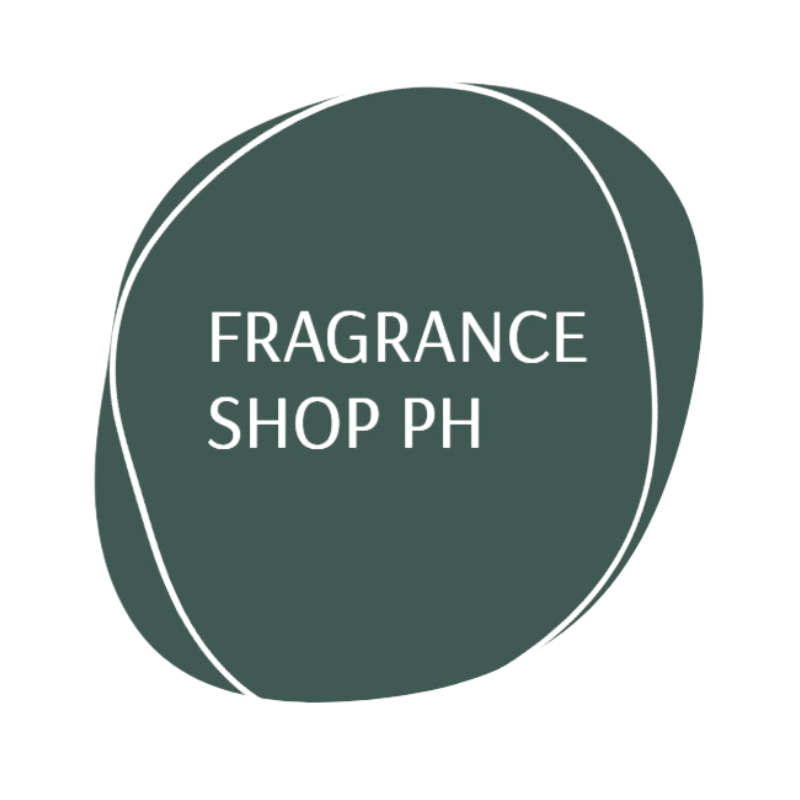







 Perfume rebranding is the strategic process of changing your perfume brand’s image, identity, and market positioning. This may involve updates to your logo, packaging, scent formulation, messaging, target audience, or even the brand name itself.
Perfume rebranding is the strategic process of changing your perfume brand’s image, identity, and market positioning. This may involve updates to your logo, packaging, scent formulation, messaging, target audience, or even the brand name itself.




